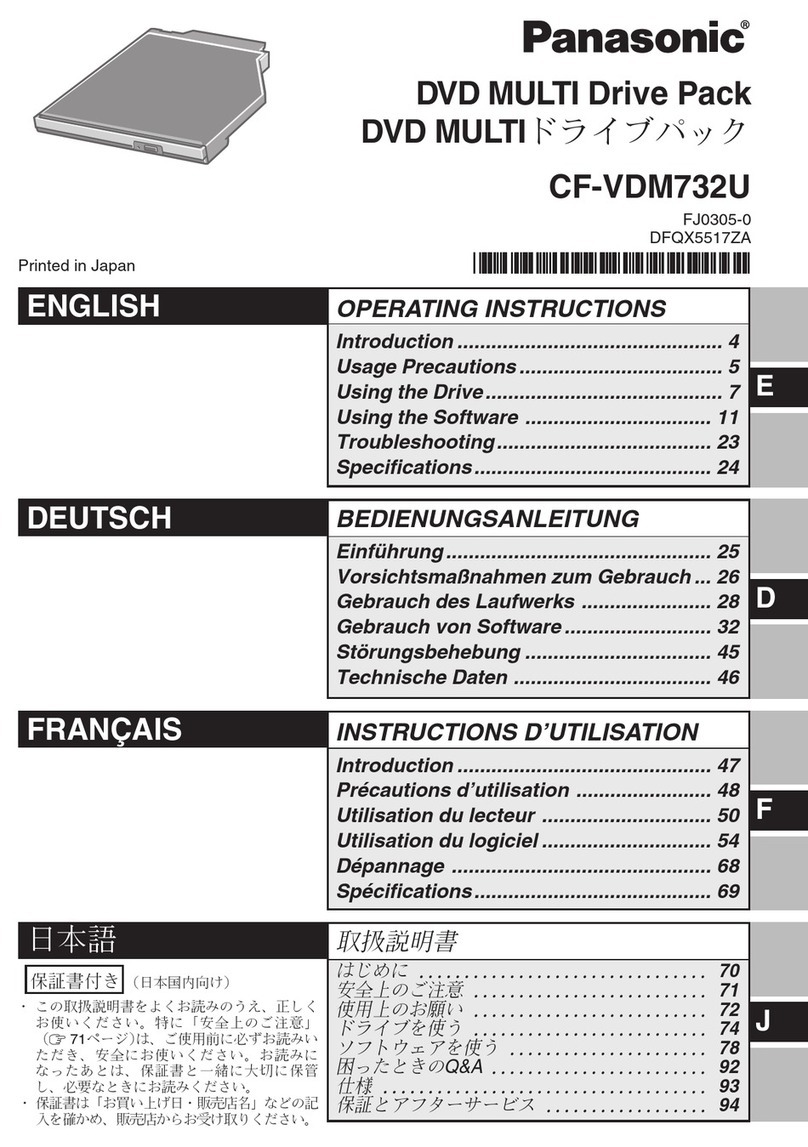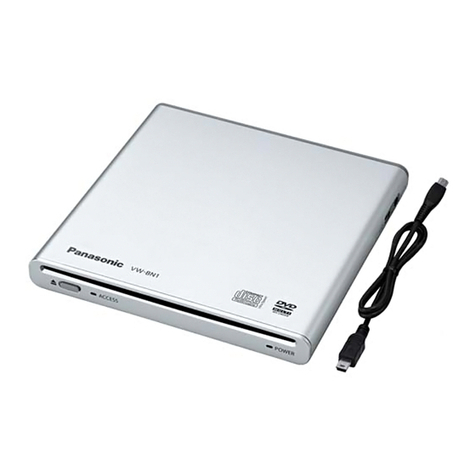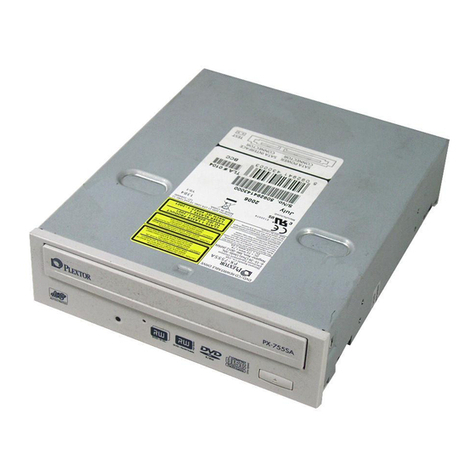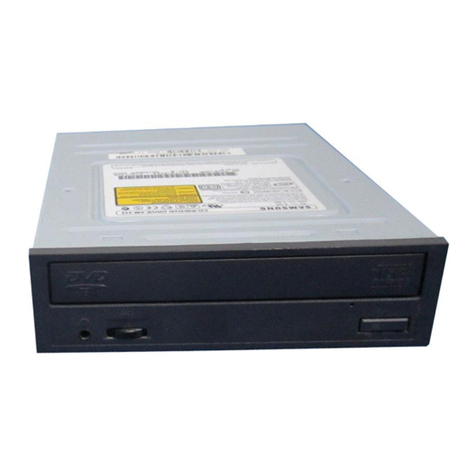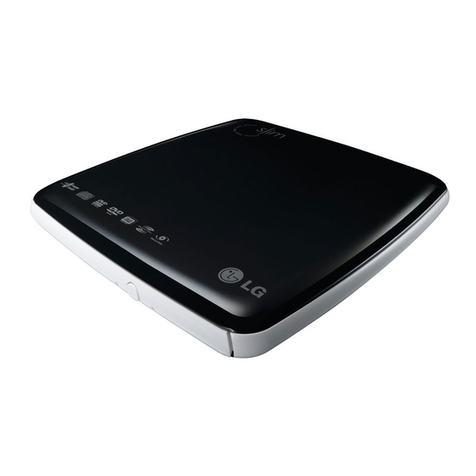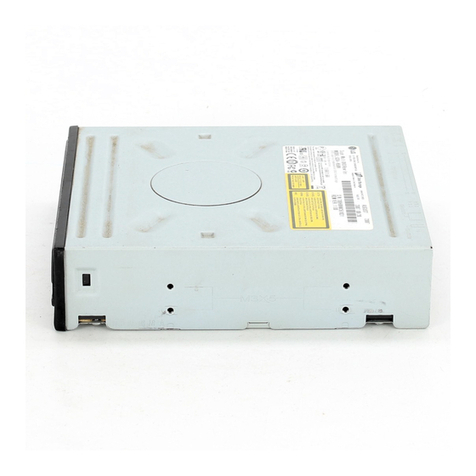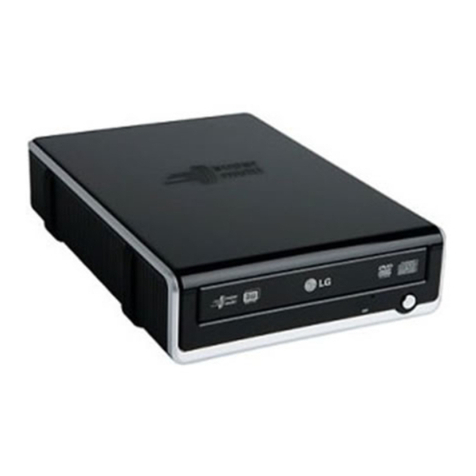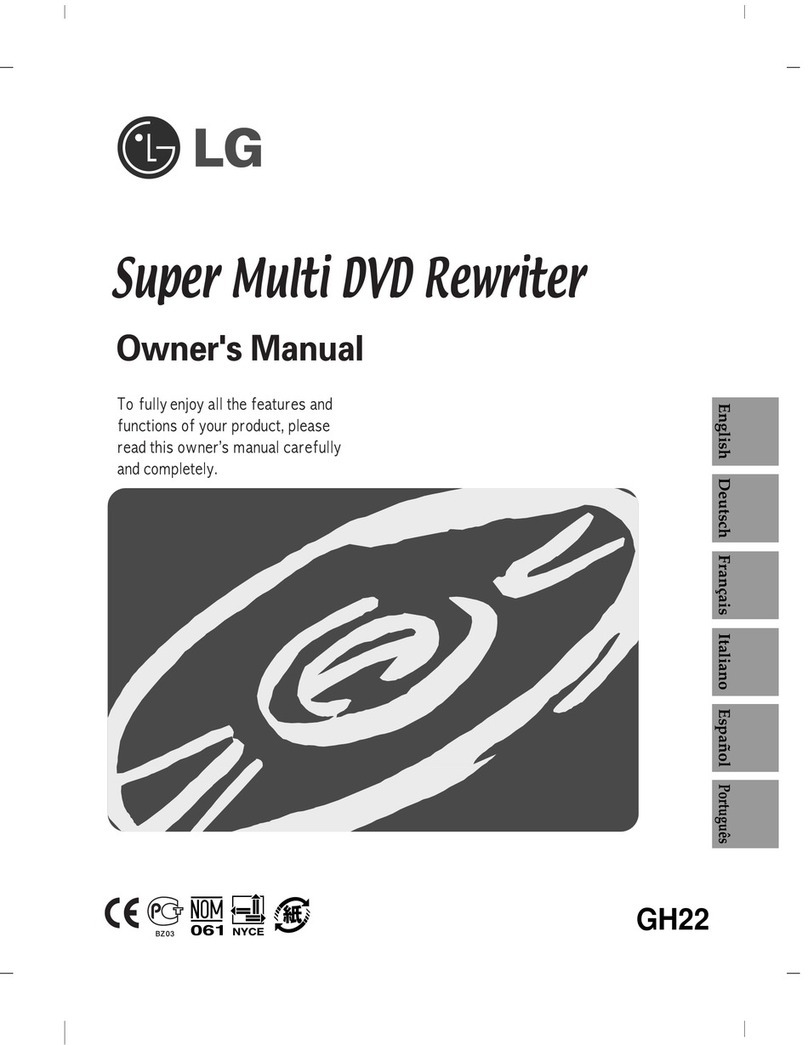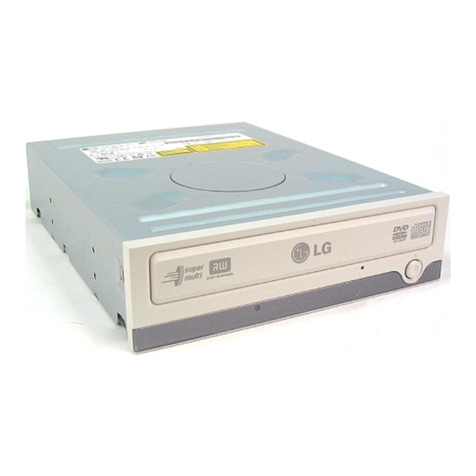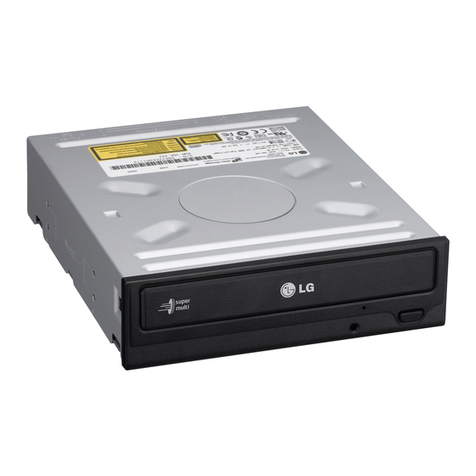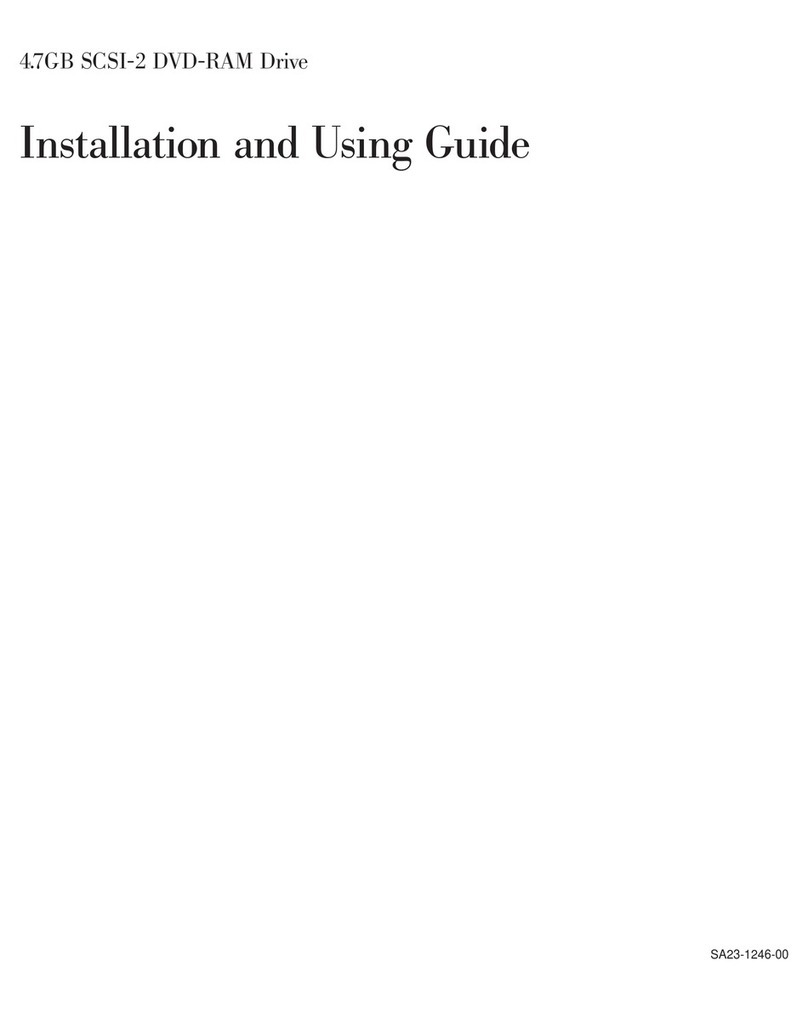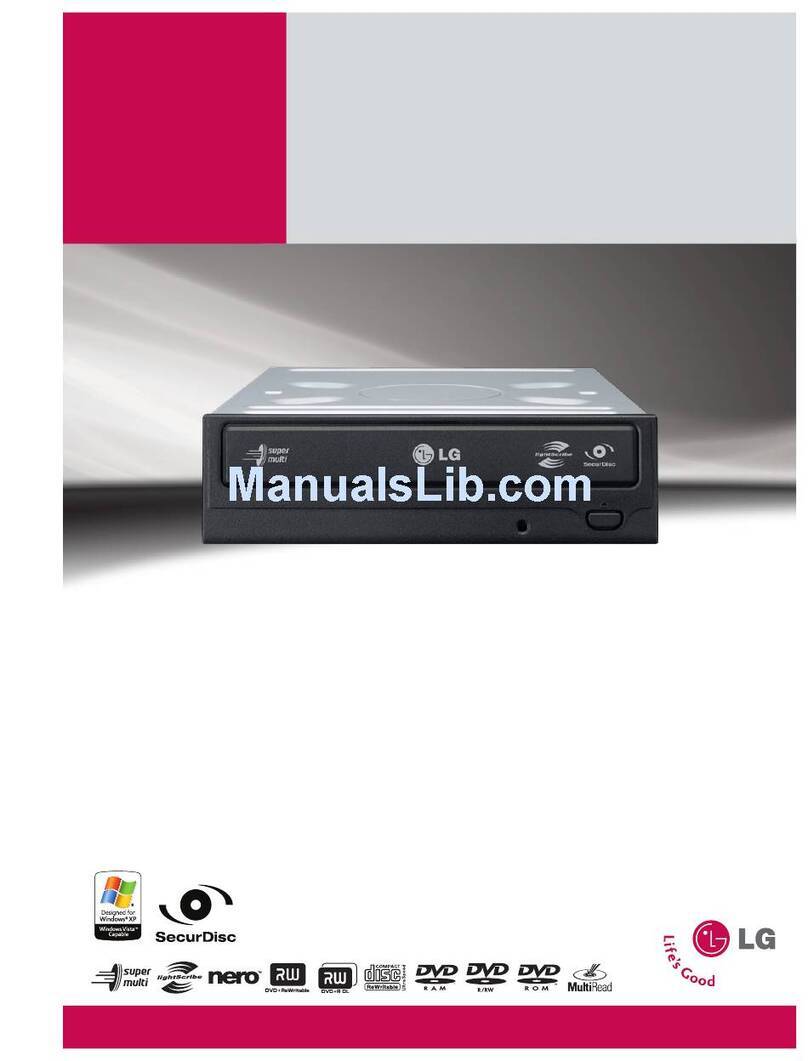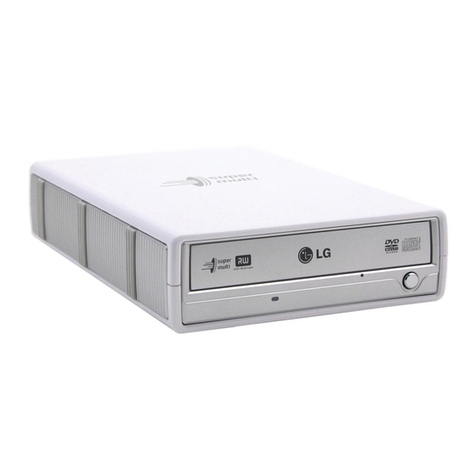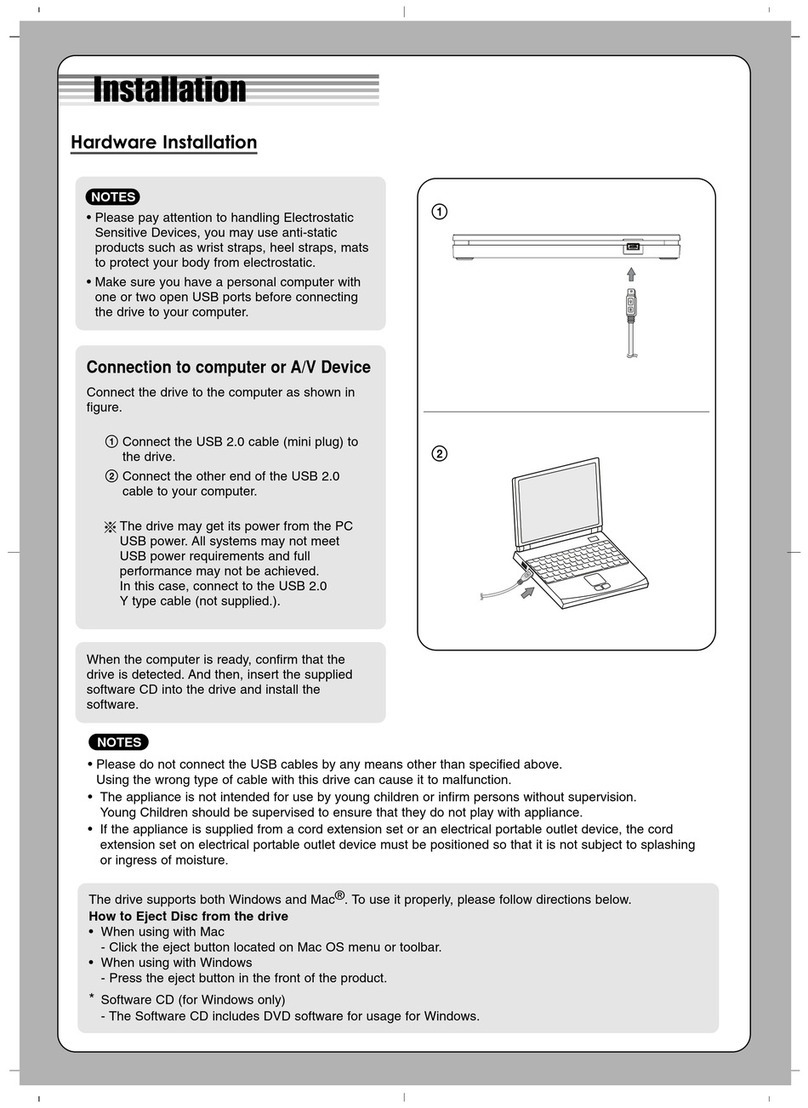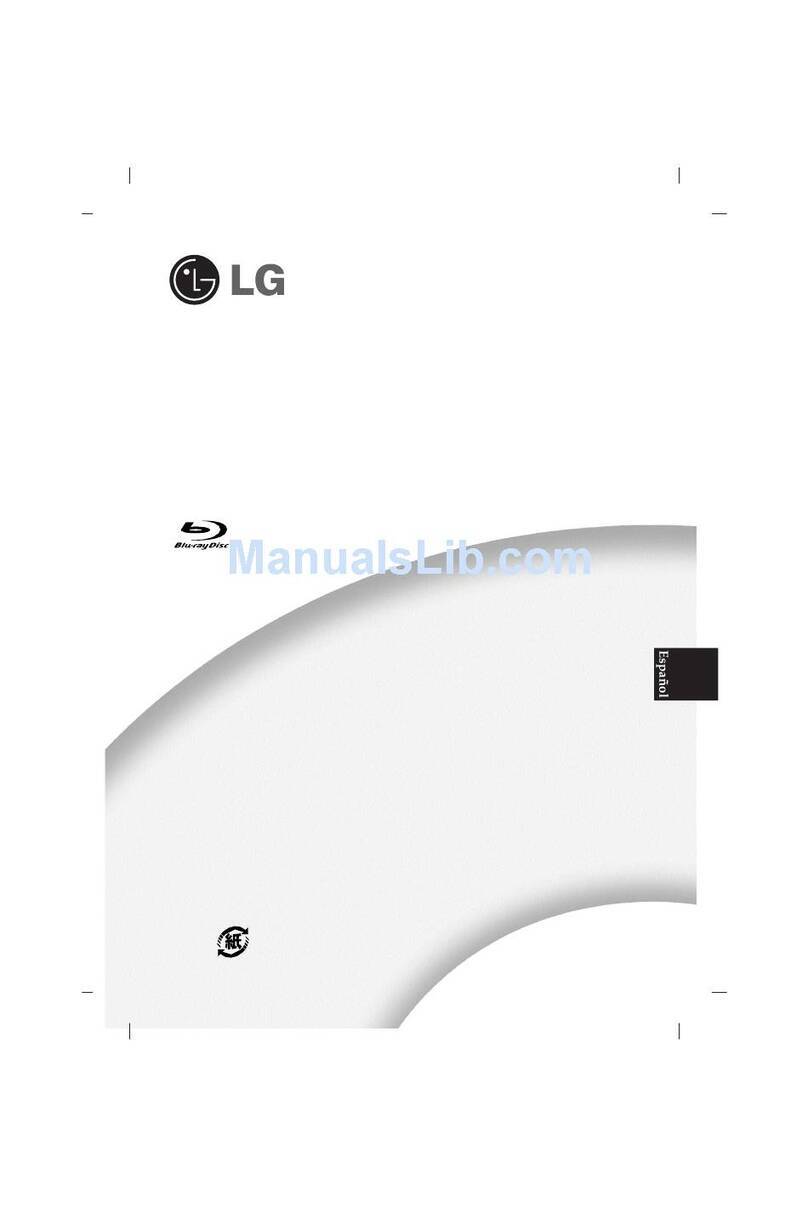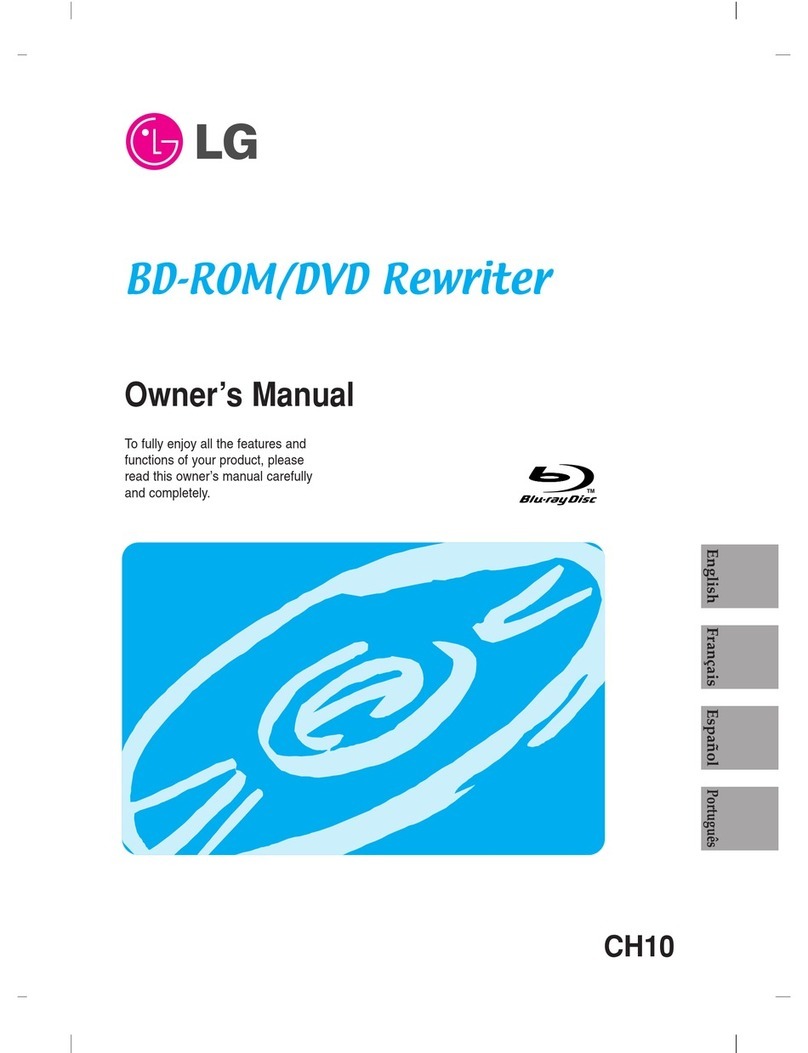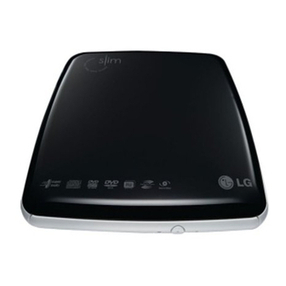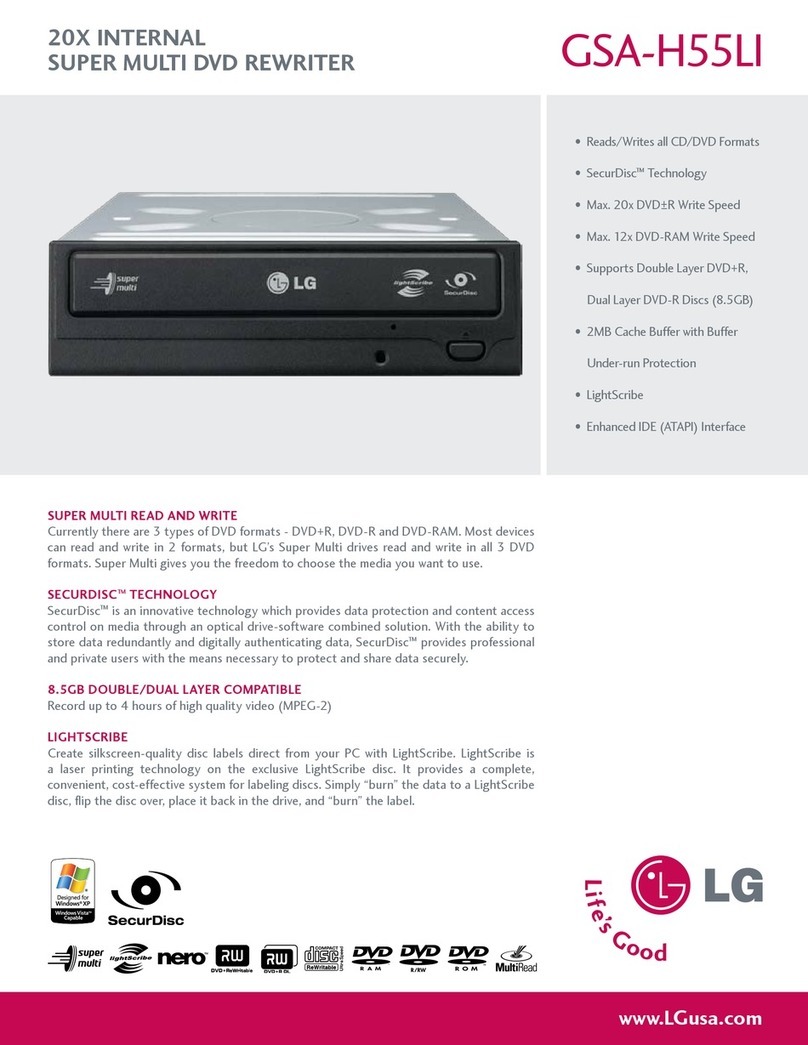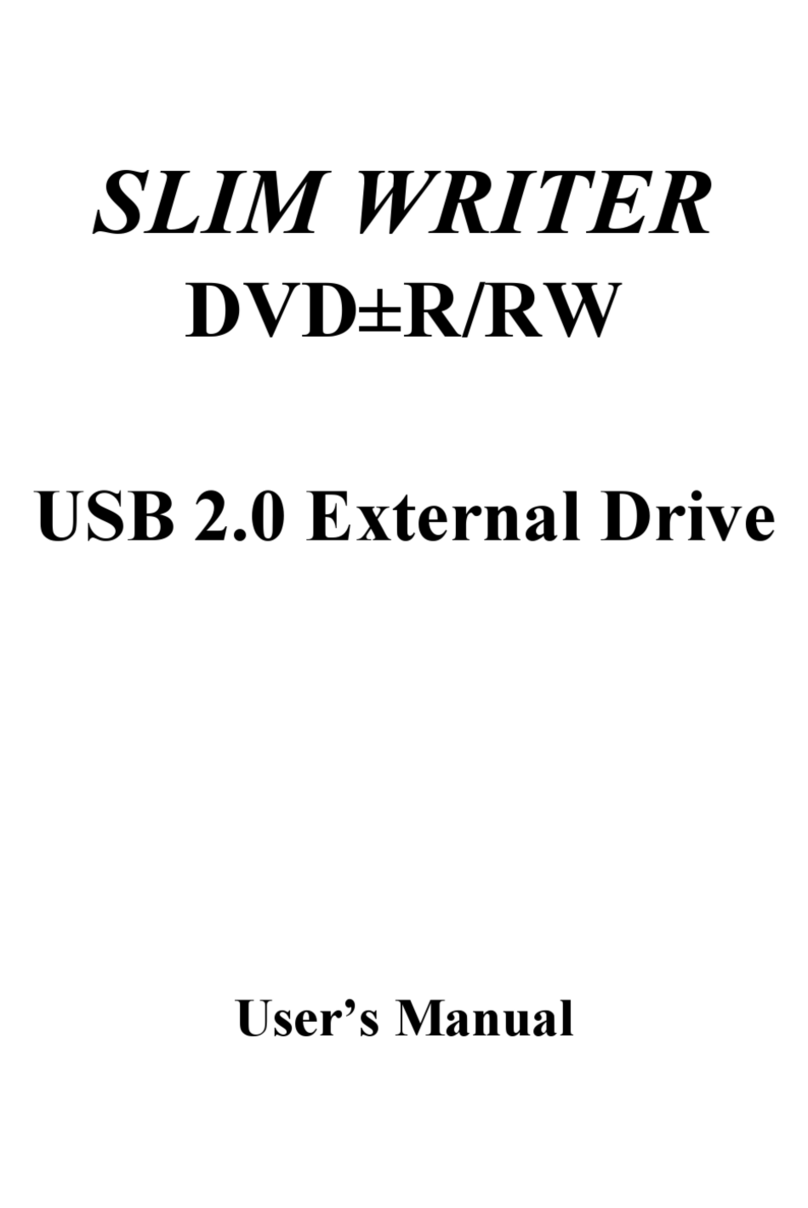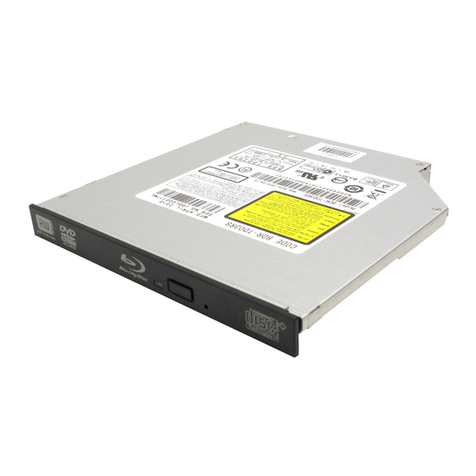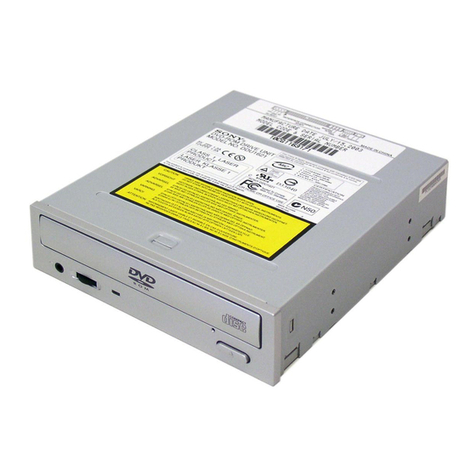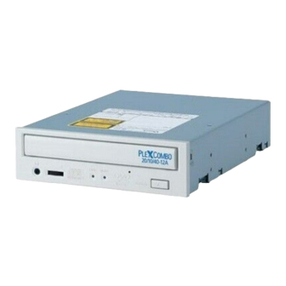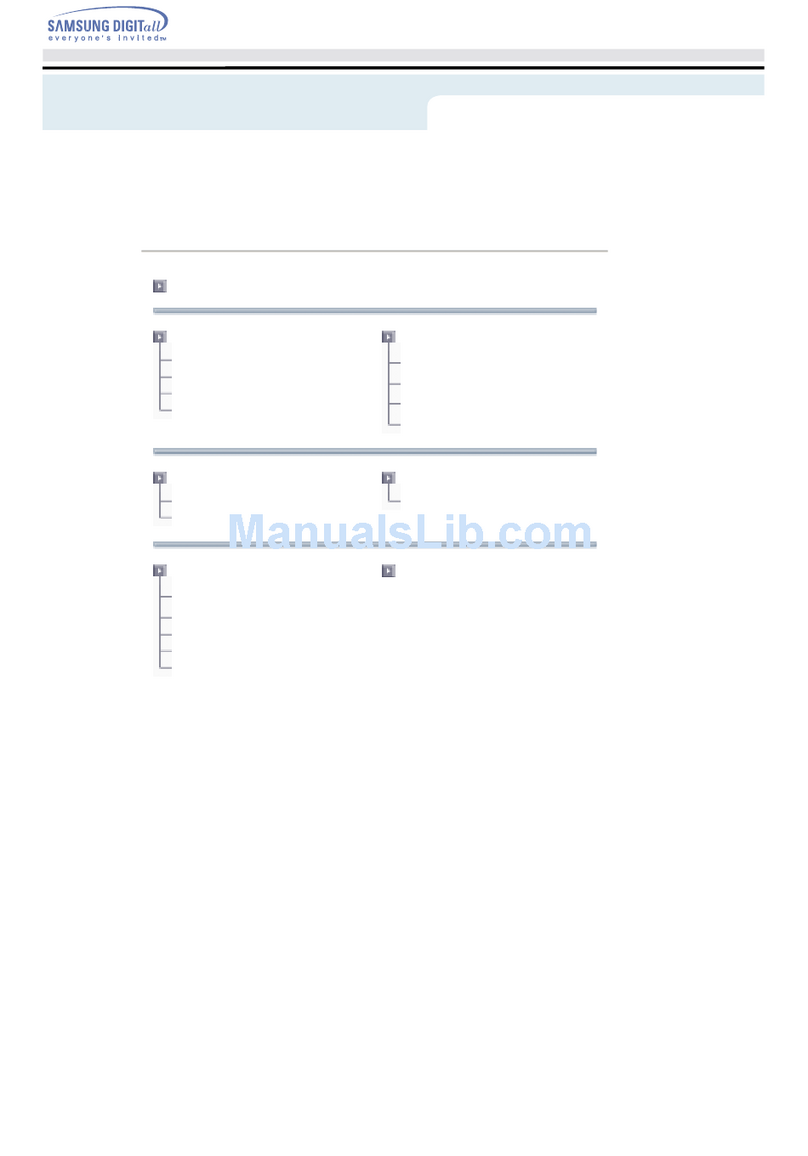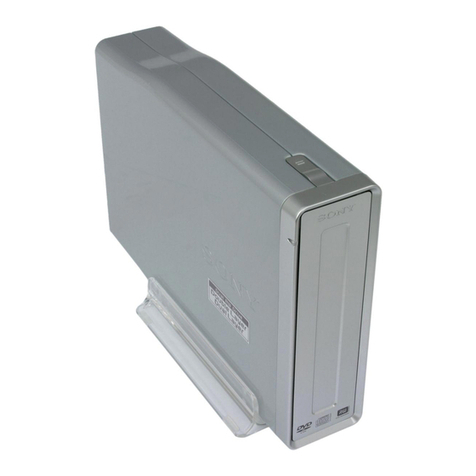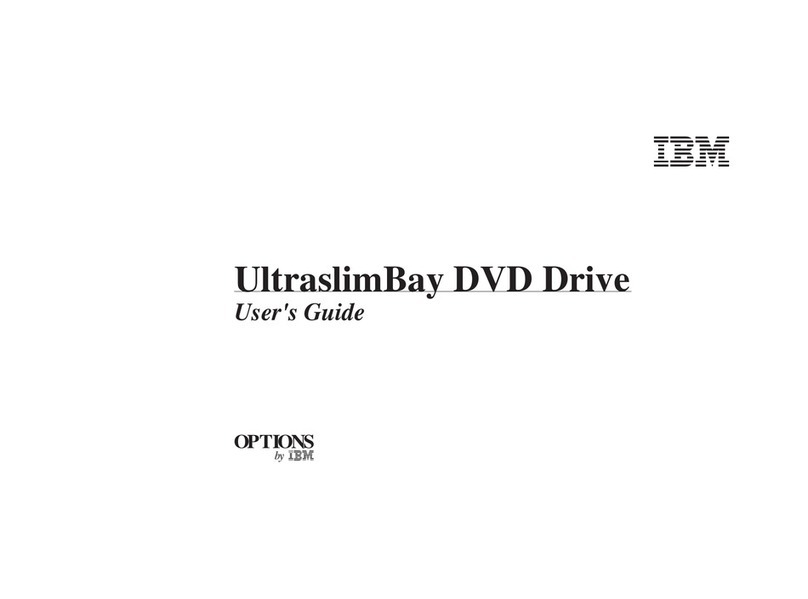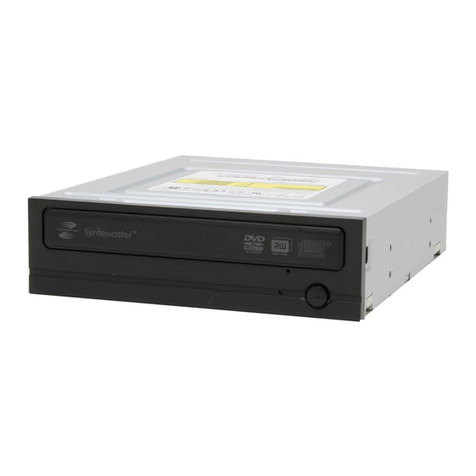6
Troubleshooting
Before Requesting Service
Before calling for service, check this list.
•The drive doesn’t have power.
•
Is the power supply cable from the host computer
plugged in?
• Is the Power Connector to the drive securely
attached?
•The system doesn’t start.
•
Are the power and SATA cables to the PC correctly
connected?
• Is the total length of the SATA cable 20 inches or
less?
• Is each connector completely attached?
Other connections may have been knocked lose
while installing the drive.
•Cannot Read discs.
• Does the CD or DVD disc have dirt or scratches?
• Is the disc loaded in the drive with the read/write
surface facing the right
direction? (label up)
• Is the drive installed in the correct orientation?
•
Was the drive or disc moved from a low temperature
environment to a high temperature environment?
(There is a possibility of condensation on the lens in
the drive or on the surface of the disc.)
When you call for service, be prepared to give as much
information as possible of your system, environment,
and the specific problem. (What happened? When?
How long? What was going on? Were there any error
messages displayed? etc.)
Please Note: Since this product supports Region
Playback Control Phase II, a certain MPEG decoder
card or Software without regional code setting may
cause this drive not to read DVD-ROM discs.
This DVD-ROM Drive enables you to change the
regional code up to 5 times.
Important Precautions
Follow these precautions when handling the drive or
discs.
Precautions
• Please take notice that the manufacturer of this
equipment does not offer any warranty against data
loss due to inappropriate
installation or handling or direct or indirect damages.
• Please take notice that the manufacturer will bear no
responsibility for direct or indirect damages caused
by the use of this product or its malfunction.
• Please take notice that the manufacturer will bear no
responsibility for damage to data caused by this
product.
Installation
• Avoid placing the drive in a location subject to:
- high humidity
- high temperature
- excessive dust
- mechanical vibration
- direct sunlight
We recommend using the drive in a horizontal or vertical
position. Do not install the drive at an angle.
Operation
•
Don’t move the drive suddenly from a cold place to a
warm one or raise the room temperature suddenly.
Condensation may occur, causing abnormal operation.
• Make sure to remove the disc before moving the
drive. The disc may be damaged, causing data loss.
• Be careful to prevent foreign objects, such as
liquids or metal, from entering the drive. In case a
foreign object enters the drive, please consult the
dealer where the drive was purchased.
• Don’t interrupt the electric power while the drive is
operating.
English
6


